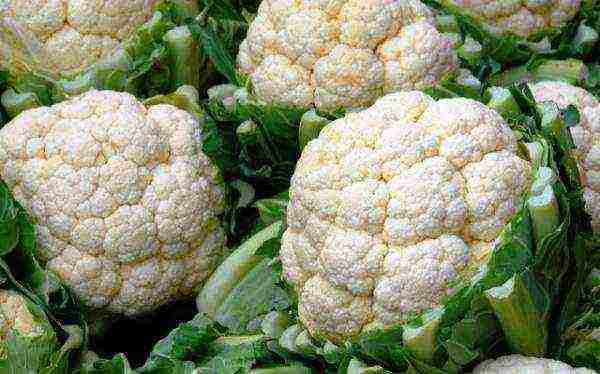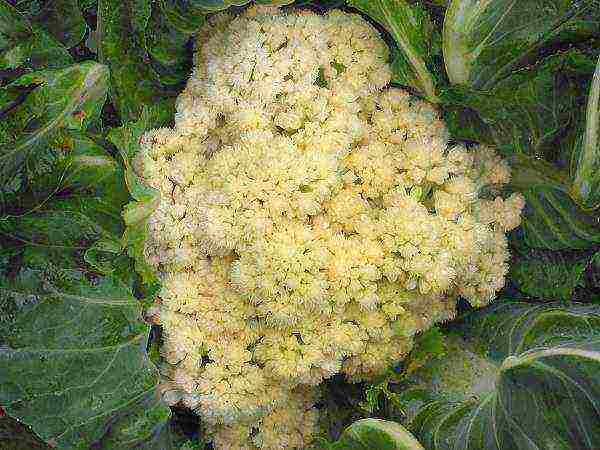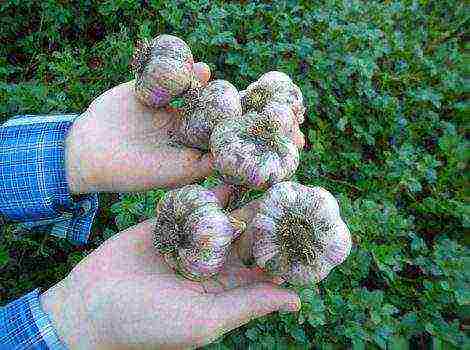The best varieties of cauliflower for outdoor use
Cauliflower is highly valued for its vitamin composition and excellent taste. Novice gardeners are advised to familiarize themselves with the description of all varieties of this crop in order to choose the right vegetables for cultivation in their gardens, taking into account the climate and other external factors.
The best varieties of cauliflower
In this article, a selection of the best crop varieties has been made, each of which has its own advantages. Everyone will be able to choose options for the garden, depending on their preferences. Here are the most delicious varieties, and the earliest, and the most productive.
The quality of agricultural technology makes adjustments to the taste and fertility of cauliflower, so when caring for a garden bed, you should not ignore the basic rules:
- watering;
- top dressing;
- loosening and weeding;
- treatment.

It is also important to collect cabbage in a timely manner, since an overripe vegetable or green one does not have either full valuable qualities or an ideal taste.
Cauliflower is considered capricious, but the selected best varieties are resistant to adverse weather conditions, typical diseases, and have excellent taste. With proper agricultural technology, gardeners are always gifted with a generous harvest. Vegetables are used both fresh and for winter preparations. With a long shelf life, they do not lose their taste and market characteristics.
Description of varieties of early cauliflower
Summer resident
The plant has a long fruiting period, the ripening period begins 80-100 days after the transfer of seedlings to the garden. White round head with a slight flattening weighs up to 1 kg. The chemical composition of the vegetable contains a high level of sugar and ascorbic acid, due to which the inflorescence has an interesting taste. The leaves cover the forming head from the scorching sun rays, which allows you to get clean fruits. The size of the summer resident variety is small, so the planting density is 3-5 plants per 1 m2 (the distance between the bushes is 50 cm). The transfer of seedlings to the garden is planned for the end of May - beginning of June. The vegetable perfectly tolerates transportation, retains its valuable properties for a long time if the storage conditions are observed.
Snowball
Cabbage fully justifies its name, mature inflorescences are snow-white in color, although the size is small. The weight of one copy does not exceed 850 grams. High yield is achieved due to dense planting, because the bush is compact, requiring no space for branching. The best variety among early maturing varieties has long been popular among gardeners. The lion's share of this success lies in the plant's resistance to typical diseases. A quick ripening period allows you to get two harvests per season in the black earth zone, from the moment of planting the seedlings to full ripening no more than 60-65 days pass. Saplings quickly take root in a new place, ripen amicably... The seedling holes are arranged according to the scheme: 50x50, 50x70 cm.
- Cauliflower summer resident
- Movir variety
- Cauliflower snow globe
Movir
A hybrid resistant to cold and high temperatures, which, due to its fast ripening period, allows you to take 2 crops per season, even in central Russia. Rounded or rounded-flattened inflorescence is white, sometimes with a creamy tint. Weight - from 500 to 1200 grams. The plant cannot boast of a special immunity to diseases and pests, but the taste of the vegetable will pleasantly surprise even a gourmet. When planting seeds, a friendly germination is noted. Fruits can be safely obtained in June, if sowing is done in the second half of February, and the transferred seedlings are covered with a film, protecting them from possible spring frosts. The location of the holes in the garden is planned with an interval of 50 cm in the row and from 60 cm in the aisle, the transfer of seedlings is planned for the period from May 25 to June 10. The plant responds well to nitrogen-potassium fertilizers and other fertilizing.
Express
The inflorescence of white color with a yellowish tinge occupies a leading position in taste among early maturing (the growing season does not exceed 62 days). Dense planting of compact plants (the interval between bushes is 25-35 cm, row spacing 60-70 cm) allows you to take a good harvest, given that the weight of the head does not exceed half a kilogram. Cabbage is vulnerable to pests, but it is resistant to no less dangerous bacteriosis. Preventive treatments and regular weeding will help prevent the invasion of parasites. The transfer of seedlings to the garden is planned for the beginning of May. A film shelter will create protection from possible night frosts.
Growing mid-season varieties
Goat dereza
A compact, upright plant with a white head that has a yellowish and sometimes reddish tint. The inflorescence weight reaches 800 grams, however, with proper agricultural technology, it is possible to grow heads over 2 kg. After planting the seedlings, the fruits ripen in 53-70 days. Seedlings are distinguished by good germination and friendly development. Shoots can be planted both in spring (second half of April) and in summer (until mid-July). Seedling holes are planned according to the scheme: 4 plants per 1 m2. Dereza cabbage is very demanding on the composition of the soil, therefore, when cultivating a crop, it is necessary to fertilize the garden bed and feed the bushes.

Flora blanca
The shoots planted in the garden mature in 109-112 days. Inflorescences have a rounded, slightly flattened shape of white with a cream shade. The weight of an average-sized specimen reaches 1.2 kg. The fruit is well covered with leaves, which protects it from the scorching rays of the sun, which can provoke the formation of dark spots and bitterness in the taste. Both seedlings and ripening occur together, so the harvest does not stretch out for a long time. The holes for seedlings are lined up according to the scheme: 50x50, 50x70 cm. Cabbage is tolerant to bacteriosis and frost; it retains its qualities for a long time with proper storage.
White beauty
Refers to a high-yielding species due to the large round head of the white color. In addition, the plant has a quick ripening period, signs of ripeness are observed 55-65 days after planting seedlings on an open bed. The inflorescence weight reaches 800-1200 grams. A feature of the culture is considered to be low resistance to temperature extremes, pests. It is recommended to cover the transferred seedlings with film material, to carry out preventive treatments against parasites in a timely manner. Cabbage retains well its dense structure and valuable properties during transportation and storage. Even freezing does not spoil the presentation.
Planting late cauliflower
Cortez
Among the late-ripening varieties, this variety is considered the most productive. The credit for this belongs to breeders who have developed a hybrid resistant to diseases and adverse weather conditions. Due to the formation of large inflorescences (weight from 2 to 3 kg), the plant needs regular soil fertilization. Large leaves create shading for the head, which makes the cabbage withstand the heat. Vegetables are harvested 75-80 days after the transfer of seedlings to an open bed. Young shoots, although capricious, quickly adapt to the new environment. The holes are lined up according to the scheme: the interval between the bushes is at least 70 cm, the row spacing is from 80 cm.

Amerigo
Snow-white massive heads ripen 74-80 days after transferring seedlings to open ground. One copy weighs 2-2.5 kg. Unlike other varieties, Amerigo has good immunity, which allows it to resist viral infections and pests. The heads can ripen until the very frost, cold resistance allows you to maintain marketable qualities and delicate taste. Intensive growth requires regular feeding. A feature of the variety is considered to be large leaves, which create shading for the inflorescences, saving them from the scorching sunlight. The transfer of seedlings to the garden is planned for the second half of May-early June. The holes are lined up according to the scheme: the interval between the bushes is 70-80 cm, the row spacing is 70 cm.
Growing cauliflower requires a little more attention and effort as the plant is less immune to disease and pests. But how nice it is to remove beautiful inflorescences from the beds and delight loved ones with delicious culinary dishes or winter preparations.


